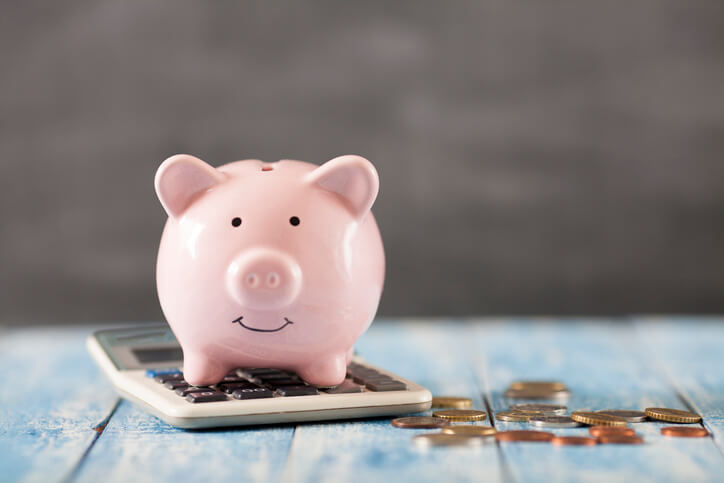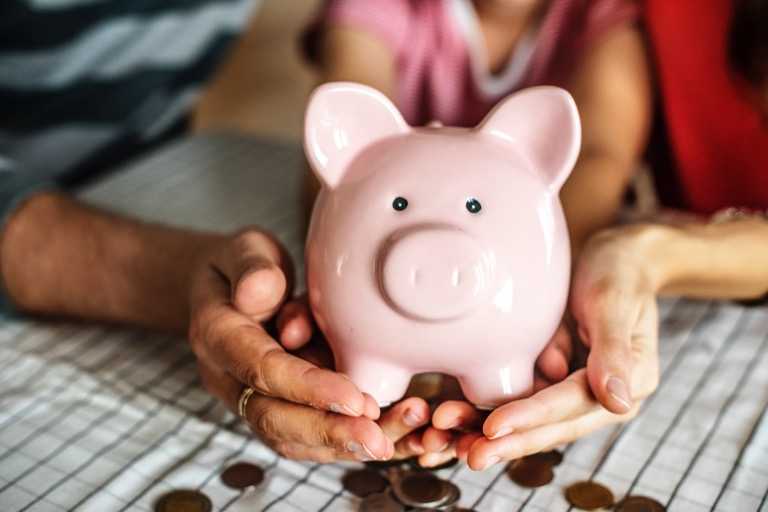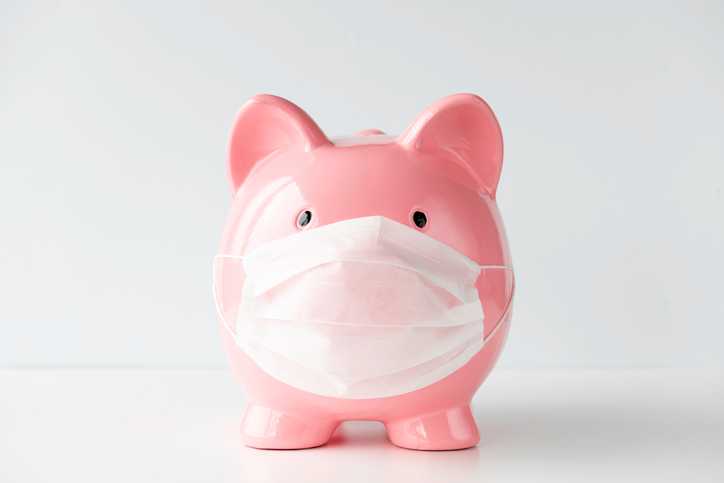How to Build An Emergency Fund
Unexpected expenses, like car repairs or unplanned medical bills, can quickly eat up your money. One unexpected expense can turn into a sticky situation, especially if you don’t have money set aside for emergencies. Luckily, that’s where your emergency fund can help. Don’t have one yet? Learn the basics of an emergency fund and follow our 5-step guide to build your own.

What is an emergency fund?
An emergency fund is a savings account you stash money into to prepare for financial emergencies. It can provide a protective barrier between you and stress when unexpected expenses arise. Because of this, it’s a good idea to have some sort of emergency fund, even if your current financial situation is stable.
Why do I need an emergency fund?
Building an emergency fund should be a priority for many reasons. Here are a few ways having one can benefit you:
- Pay for emergencies when they arise. An emergency fund can help you pay for unexpected costs without disrupting your usual budget. It can also save you from resorting to more costly alternatives like high-interest credit cards or payday loans.
- Prepare for the future. Unfortunately, recessions are always possible in our economy, and they bring several adverse effects with them, including pay cuts and unemployment. An emergency fund can help you stay afloat in these lean economic times.
- Maintain peace of mind. Financial emergencies are a normal part of life, but that doesn’t mean they’re not stressful. Even the prospect of them can cause stress and anxiety. An emergency fund helps to mitigate this; when you’re financially prepared for anything, there’s usually less to worry about.
- Protect your credit score. If you can’t afford an unexpected expense out-of-pocket, you may need to use a credit card to pay for it, which can increase your credit utilization ratio. Or, you might be able to pay for it out-of-pocket, but with money you planned on using to pay your bills, which could result in late or missed payments. Either of these scenarios can negatively affect your credit score. However, if you have an emergency fund, you can avoid disrupting your primary budget or risking a late payment, which can help protect your score.
How much money should I have in my emergency fund?
No magic number works for everyone when it comes to an emergency fund. Look at your personal financial situation to help you determine how much money makes sense for you to stash away for emergencies. For example, if you support dependents (family members, children, etc.), you might need more in your emergency fund than someone who does not. Or, if you’re paid hourly and your hours fluctuate each month, you might want to stash away more in your emergency fund for months when you work fewer hours. The ideal size of your emergency fund depends on a few things, including your current expenses and any debts you’re repaying. Here are a few general rules of thumb:
- If you have little or no debt, commit to saving 3-6 months’ worth of living expenses. A living expense is anything you regularly pay for, like your rent or mortgage, transportation costs, food, etc.
- If you have a lot of high-interest debt and/or no savings, try to save $1,000 in an emergency fund, then focus on repaying debt after that.
Once you’ve set a savings goal that works for you, write it down and put it somewhere you can see it regularly, like in the notes app on your phone or a post-it note on your desk.
5-Step Guide to Build Your Emergency Fund
Starting your emergency fund can feel daunting, especially if you don’t have much money saved right now. These 5 easy steps will help you get on the right track.
1. Set a budget that prioritizes saving
Without a way to guide your spending and encourage saving, you may not have much money to put into your emergency fund. That’s where budgeting, particularly a budget that prioritizes saving, comes in. Set a budget for your overall spending that factors in your income, monthly expenses, and a dedicated emergency fund category so you’re set up for success. Need help kickstarting your budget? Read up on our beginner’s guide to budgeting.
2. Decide where to store your emergency fund
Your emergency fund should go somewhere safe, secure, and easily accessible. Ideally, your savings will also earn some form of interest. Finding an account that has it all may seem difficult, but there are plenty of options. Here are some to consider:
- High-yield savings account: For a combination of accessibility and interest, consider a high-yield savings account. These offer competitive interest rates and can grow your savings faster than a traditional savings account. Depending on your institution of choice, deposits up to $250,000 are typically insured by the FDIC or the National Credit Union Association (NCUA).
- Traditional savings account: You have two options here. You can open a traditional savings account at a different bank than your main financial institution so you physically separate your emergency fund from your everyday money. Or, you can open a savings account at your primary bank that links directly to your checking account.
- Money market mutual fund: These low-risk investment accounts generate interest over time, but they are typically not FDIC-insured.
- Money market deposit account: A money market account, which is typically FDIC-insured, is similar to a traditional savings account but usually has more competitive interest rates. Money market deposit accounts often have similar functionalities to a checking account, like access to your money via a debit card or check.
3. Make small, consistent deposits
A large emergency fund goal can feel overwhelming. Make it more manageable by breaking it into smaller, more achievable increments. For example, if your emergency fund goal is $3,000, commit to saving $250 every month until you hit your larger goal. Your smaller goal should still challenge you and help you reach your ultimate goal sooner rather than later, but it shouldn’t be so large that it seems unattainable or doesn’t make sense for your budget.
4. Limit how often you dip into your emergency fund
Every person has a different perspective of what an emergency is. A good rule of thumb is if a situation threatens your financial stability (both long-term and short-term) or your health, it’s an emergency and should be paid for through your emergency fund; if it doesn’t, it should be funded through your everyday budget. Common financial emergencies that may justify using your emergency fund are:
- Car or home repairs: Since these expenses are tied to your ability to live, cook, sleep, and get to work safely, it’s reasonable to pull from your emergency fund to cover them.
- Medical expenses: It can be hard to predict when, and if, healthcare costs will arise, so it’s good to have funding on hand to help pay for them as needed.
- A pay cut or unemployment: Unfortunately, pay cuts and job loss can happen. Having an emergency fund during these times can provide you with a “safety net” until you land on your feet.
5. Replenish your emergency fund if you tap into it
This might sound obvious, but it’s easy to forget to do. If you use some (or all) of your emergency funds, start replenishing that money so you have enough to pay for unexpected expenses when they arise.
Continue to Monitor Your Credit
As you build your emergency fund, monitor the other aspects of your financial health, especially your credit score. Upgrade’s free Credit Health tool helps you track your credit score, alerts you of changes to your score, and provides personalized recommendations to improve your credit health. With your emergency fund and good credit, you’ll be better prepared for anything that comes your way.


